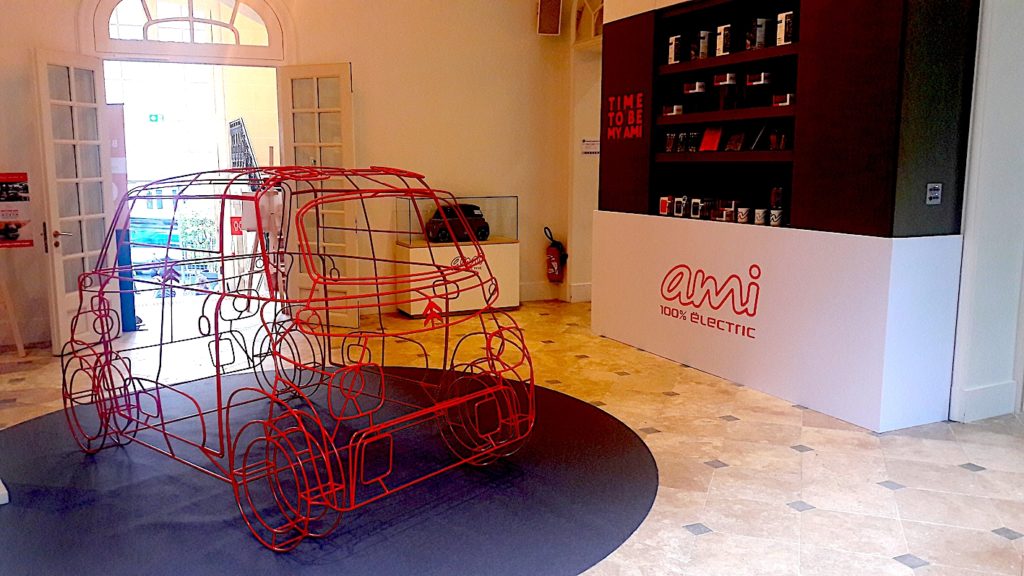

The Citroën AMI in front of… itself

Any naked (top) AMI will not satisfy anyone. Contrary to the view above, which shows two differently lit variants of the AMI, the little Citroën exists in only one color: a blue-gray. The AMI-AMI version at the very top, devoid of hubcap, stickers and decorative masks front and rear is frankly sad. If you don’t want to let your children paint it with their “gouache” lipsticks, there are a few solutions to get it out of this undesirable object world.
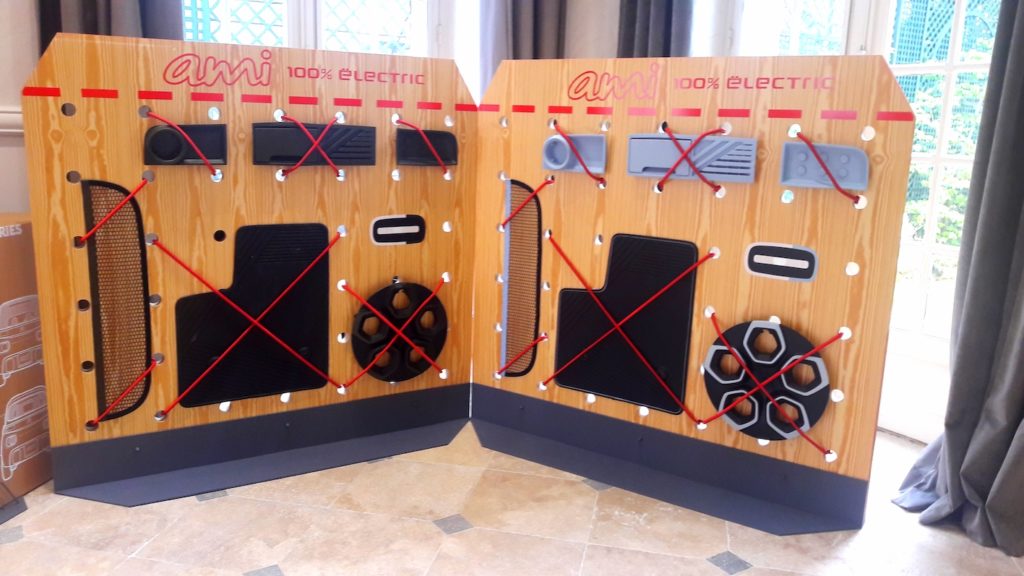
It starts with the almost obligatory purchase of one of the four kits offered for the modest sum of 400 €. These kits have the accessories, hubcaps and stickers to transform your AMI with four colors: Orange, Grey, Khaki and Blue. It will then be up to you to ensure the installation, but do not panic, the AMI has everything planned with explanatory tutorials: https://www.youtube.com/watch?v=BoLYwF4vqA8

This is a 3/4 AV view – Ah, no, this is a 3/4 AR view … – is an AMI that became AMI Orange with its accessories. It finally costs “only” 6400 €. Two other versions (Pop and Vibe) are also available (see previous post)
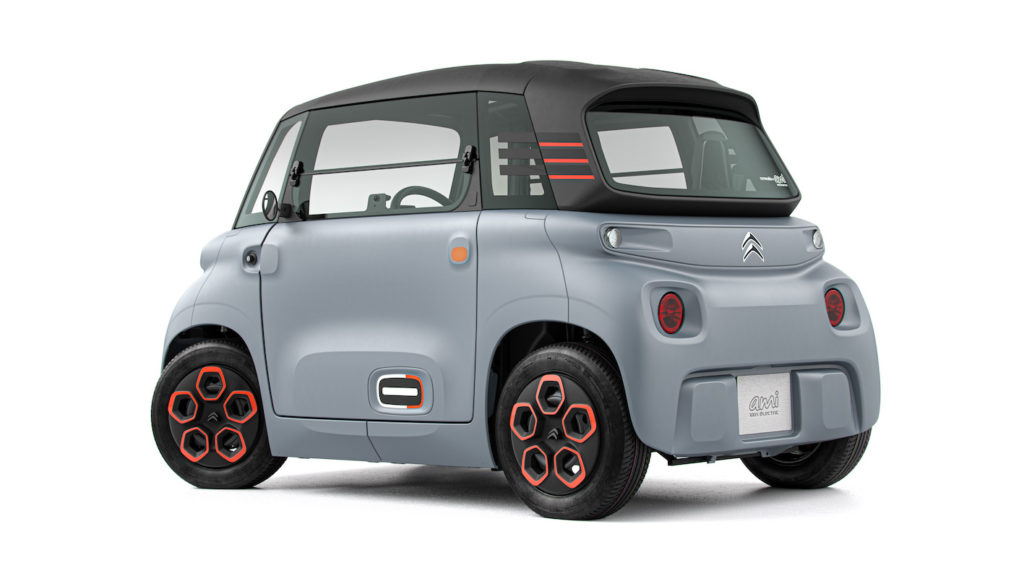

The Citroën AMI in front of… the AMI ONE

As the first concept car of the centennial year, the AMI ONE unveiled in early 2019 clearly announced the series version. In fact, the AMI was already in the pipeline when the AMI ONE took the concept of the little Citroën dedicated to tomorrow’s urban mobility to its paroxysm.

The theme of the symmetry of the parts, already adopted for the production vehicle, was to be developed with more freedom on the concept car, even if its designer Pierre Icard reminded us last year that “it’s complex, especially since these parts are not symmetrical but identical! A number of tricks have to be found. But it wasn’t easy because it’s all about balance to define the right curves, the right lines and to make sure that these identical pieces don’t finally stand out. As soon as we moved a line, we had to see immediately with the 3D modeler on screen if this balance was not broken.”
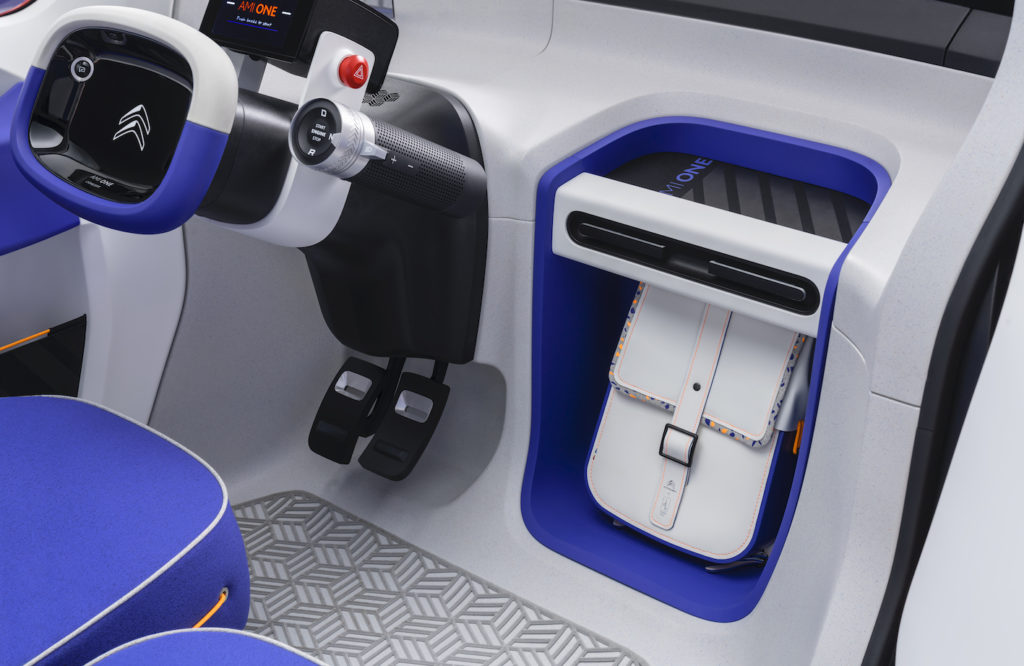
Another AMI trick deflowered by the AMI ONE concept car is the space dedicated to the storage of a cabin suitcase, already present in 2019 but treated differently because the base of the concept car was not intended to be industrialized, whereas the tubular chassis of the standard AMI was being designed. It should be noted that the latter goes through the cataphoresis of the Moroccan PSA factory, alongside the bare bodies of the 208!

The Citroën AMI in front of… la Peugette de Pininfarina
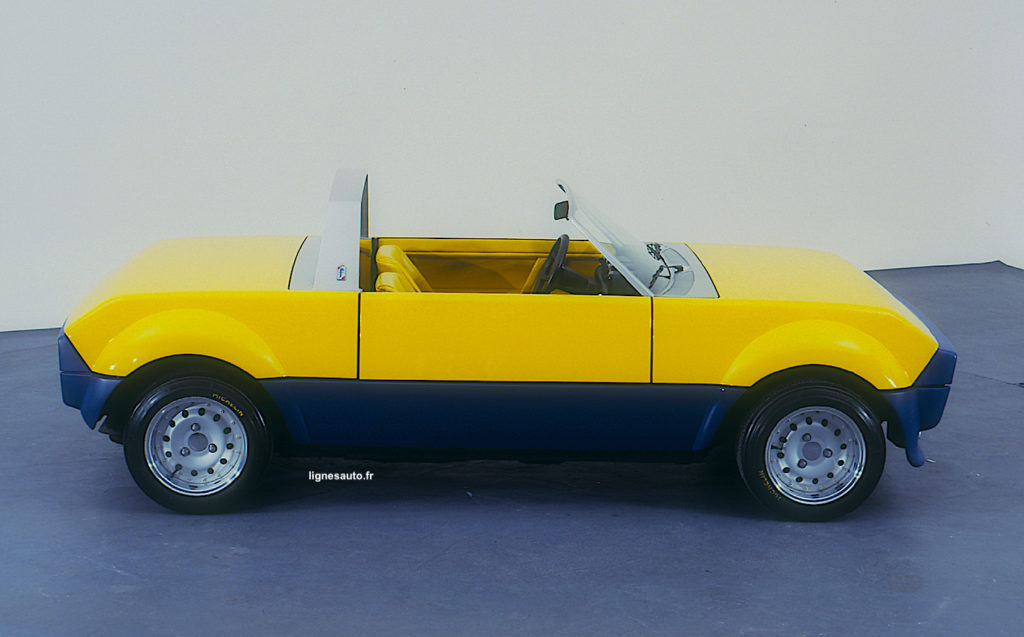
To reduce production costs, the number of parts in the AMI body has been halved: the front mask is identical to the rear mask and the left door is identical to the right door. Unless it is the other way around. As for the micro-wings, they are also symmetrical. In short, there are five main parts for the body.

Looking at the AMI, we ask ourselves the question: “Where is the head? Where’s the back?” Yet symmetry is not a new theme in terms of design: as early as 1976, Pininfarina proposed the Peugette on a base of the Peugeot 104 coupé ZS with only eight body parts. Pininfarina even came up with the idea of a “tray” variant with only one seat. Without industrial suite.
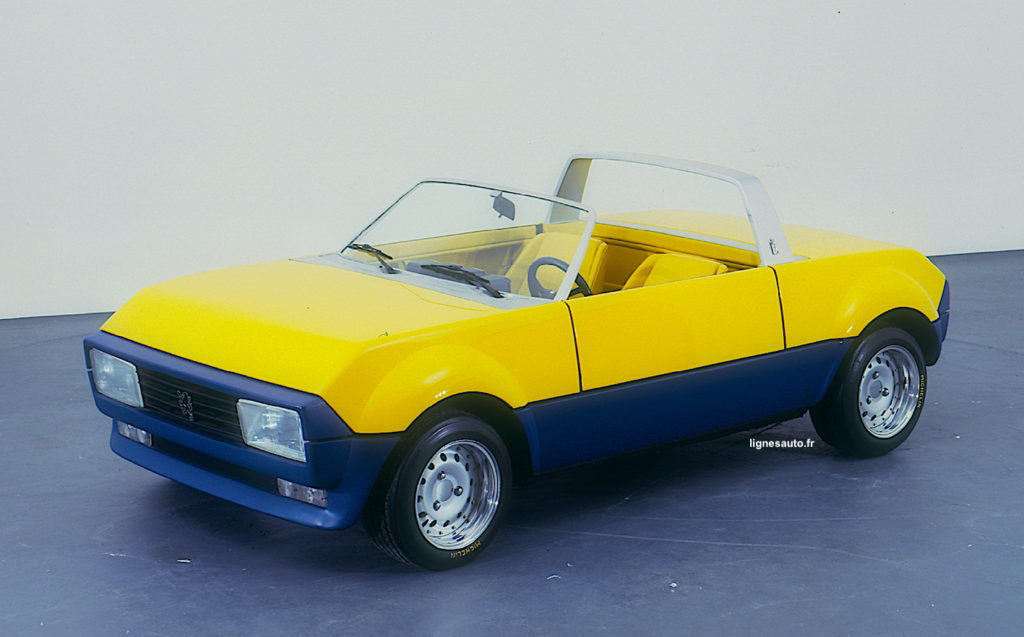

The Citroën AMI in front of… Osmose
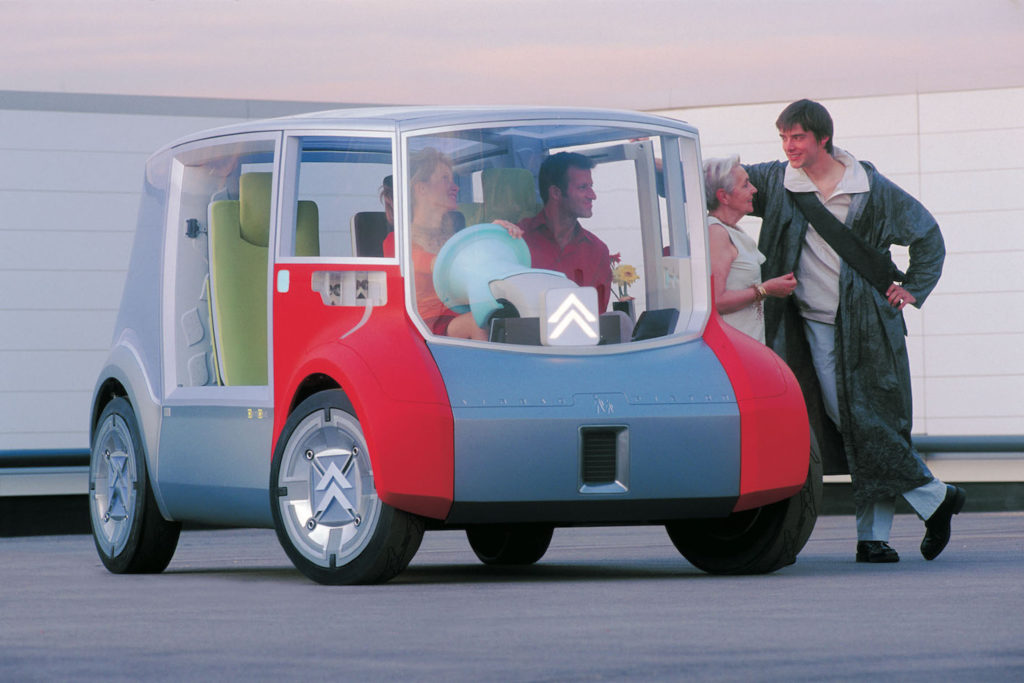
Would the AMI have come into being without the Osmose concept car? No doubt, but this salon prototype (the first of the Jean-Pierre Ploué era at Citroën) was ahead of its time. Presented already 20 years ago (in 2000), the Osmose was designed by Frédéric Duvernier who followed Ploué from Ford to Citroën. He confided to us during the writing of the book “Concept-cars Citroën” that this concept “was born from the idea of an urban vehicle for the 2020s”.

Osmose is then well ahead of its time. While in the aisles of the motorshow, concept cars with V8 petrol engines are legion, the Citroën proposal already evokes car-sharing and invents the pedestrian airbag! Frédéric also noted that Osmose “heralded applications such as Waze and brought to a standstill a host of utopias that are now finding their answers, twenty years later”!
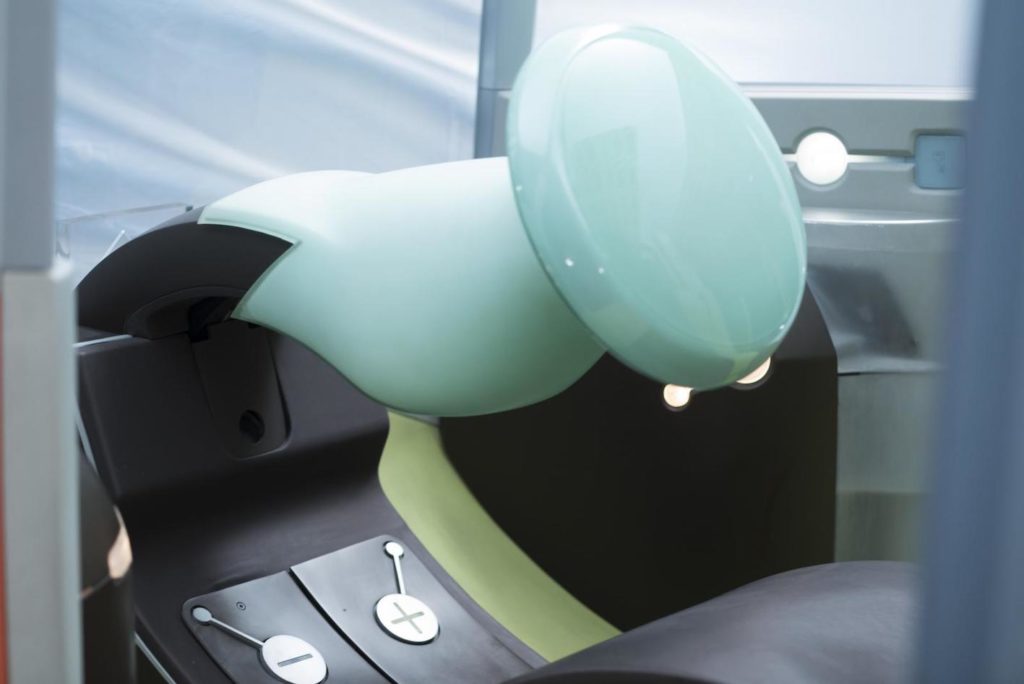
With its 3.35 m length, this boxing concept is in another category than the AMI (2.41 m) but it offers up to five seats. What if it was the successor to the Citroën C1? Osmose, reinterpreted with the AMI’s economic and industrial solutions, could be the entry-level Citroën of tomorrow…
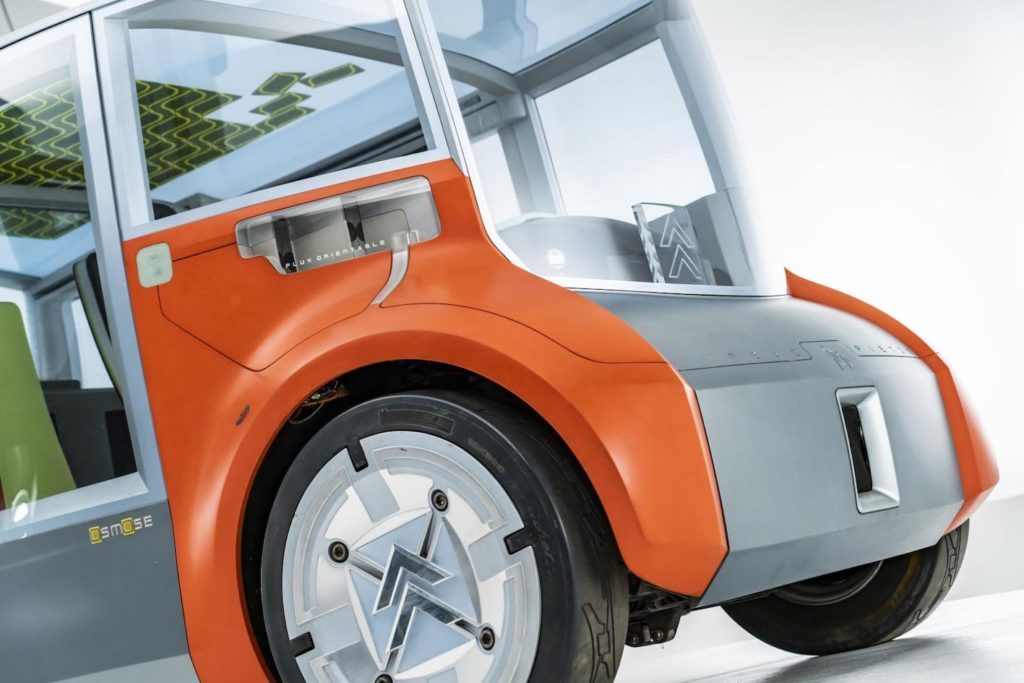

The Citroën AMI in front of … the MOTIV
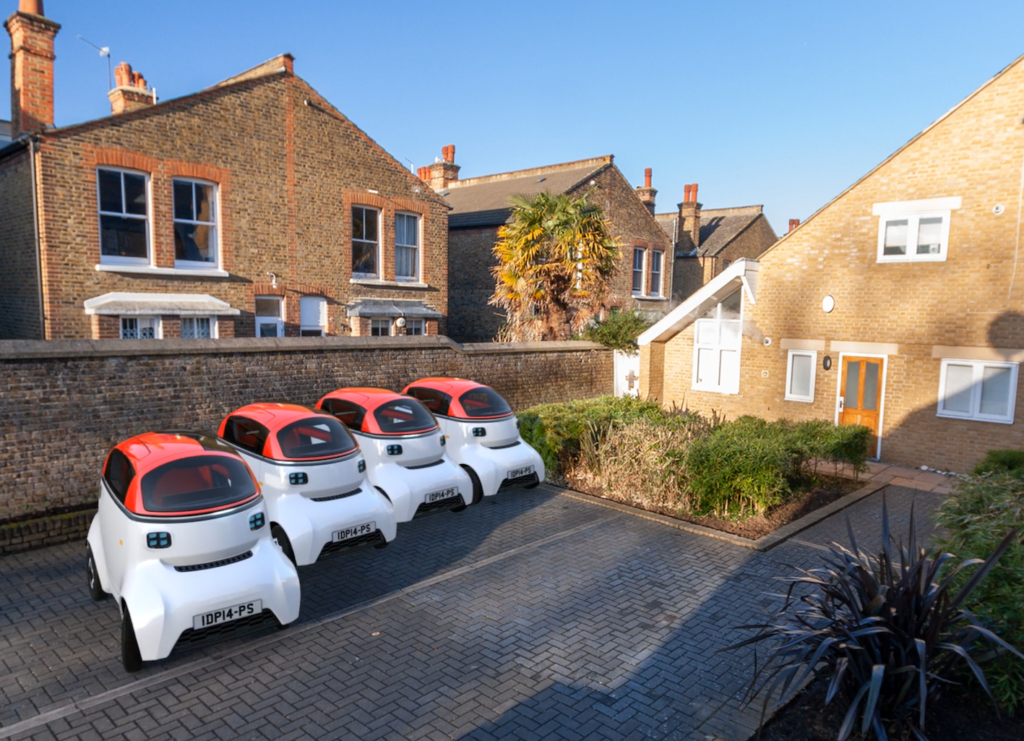
As much as the AMI is designed with the objective of an individual, simple, economical and easily industrializable mobility object, its English “competitor” MOTIV is the opposite. And for good reason: it was designed by engineer Gordon Murray, author of the most beautiful F1 cars of the 1980s and 1990s and creator of the new T.50. Its architecture differs from that of the AMI with its unique door that tilts from left to right, freeing access to the board.
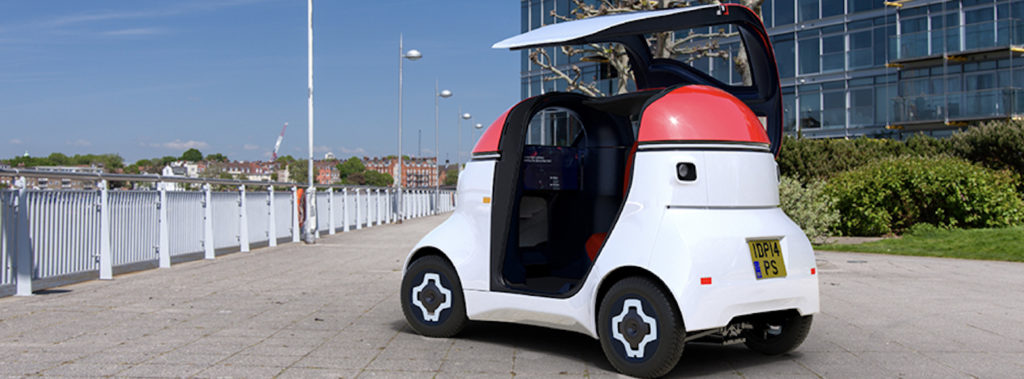
Although MOTIV is longer than the AMI (2.53 m compared to 2.41 m for the French one), it has been adapted from the outset to accommodate two passengers but also to accommodate a wheelchair (a very smart solution for people with reduced mobility) or for commercial deliveries. In its form for goods transport, the platform can be modified to allow maximum load capacity, creating a volume of more than 1,100 liters.
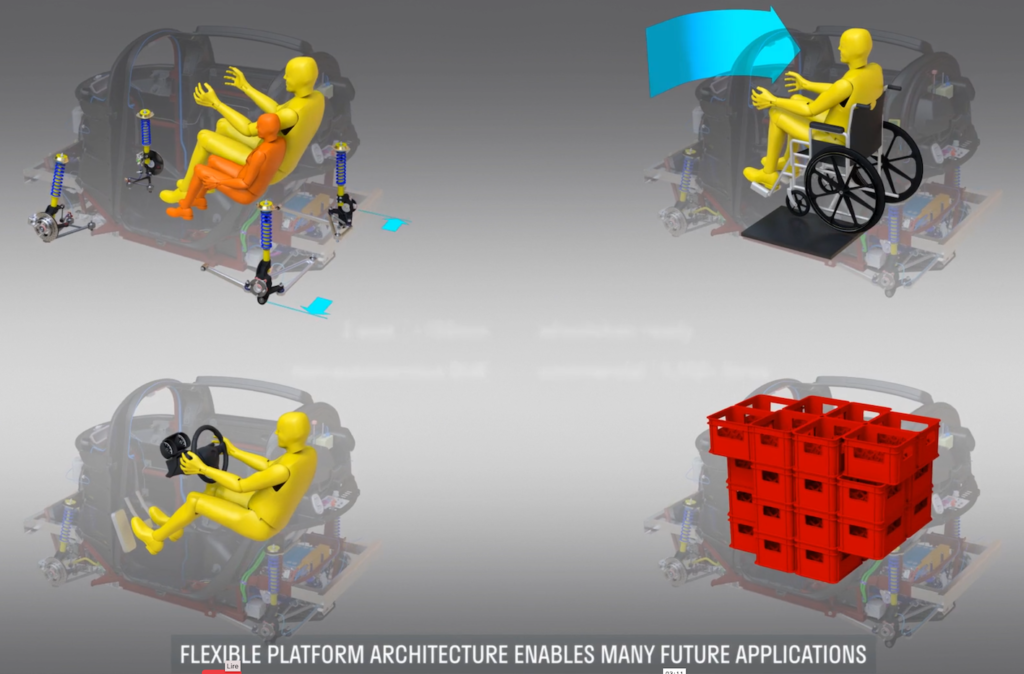
MOTIV is a single-seater “pod” (in its basic version) that offers the versatility of personal transport or last-mile deliveries. It is powered by a 20 kW electric motor and will be equipped with a 17.3 kWh liquid-cooled battery pack, giving it a potential range of 100 km. It will operate at speeds of up to 65 km/h, making it ideal for operation in urban and suburban areas. Its ambition is therefore broader than that of the AMI.

The Citroën AMI in front of… the e-Mehari

There were very few electric cars in the Citroën range until then. Let’s talk about the C-Zero based on Mitsubishi and also the e-Méhari, taking over Bolloré’s car (Bluesummer) with a specific battery concept that did not grow in size in the end. Tomorrow, the compact sedan C4 will join the AMI.

The Citroën e-Méhari is an electric convertible produced by Citroën from 2016 to 2019. Citroën wanted to communicate on the return of the new Méhari, but the public is not naive … And yet, its interior can be washed with a water jet, as on the reference born in 1968. Although it is displayed with a front end inspired by the 2015 C4 Cactus M concept car, the e-Méhari has had a fairly discreet career. Its prices ranged from 7000 to 12500 €.

The Citroën AMI in front of… the 2CV Hermès

Did the 2CV leave any genes to the new AMI? This is enough to start a heated debate that LIGNES/auto will not enter into. If we oppose the AMI to the 2CV here, it is above all by taking the counter-example of the unique Hermès 2CV version with its leather interior, a material that can be found right up to the commodos and on the ball of the gearshift lever.Its four seats kill the little new AMI, while the comfort of the Deuche buries it!

Riding in the city in a 2CV Hermès is probably the best way to face the two-seater AMI, whose comfort is not the first quality. But isn’t the ultimate Citroën for urban mobility an electric Hermès 2CV?
